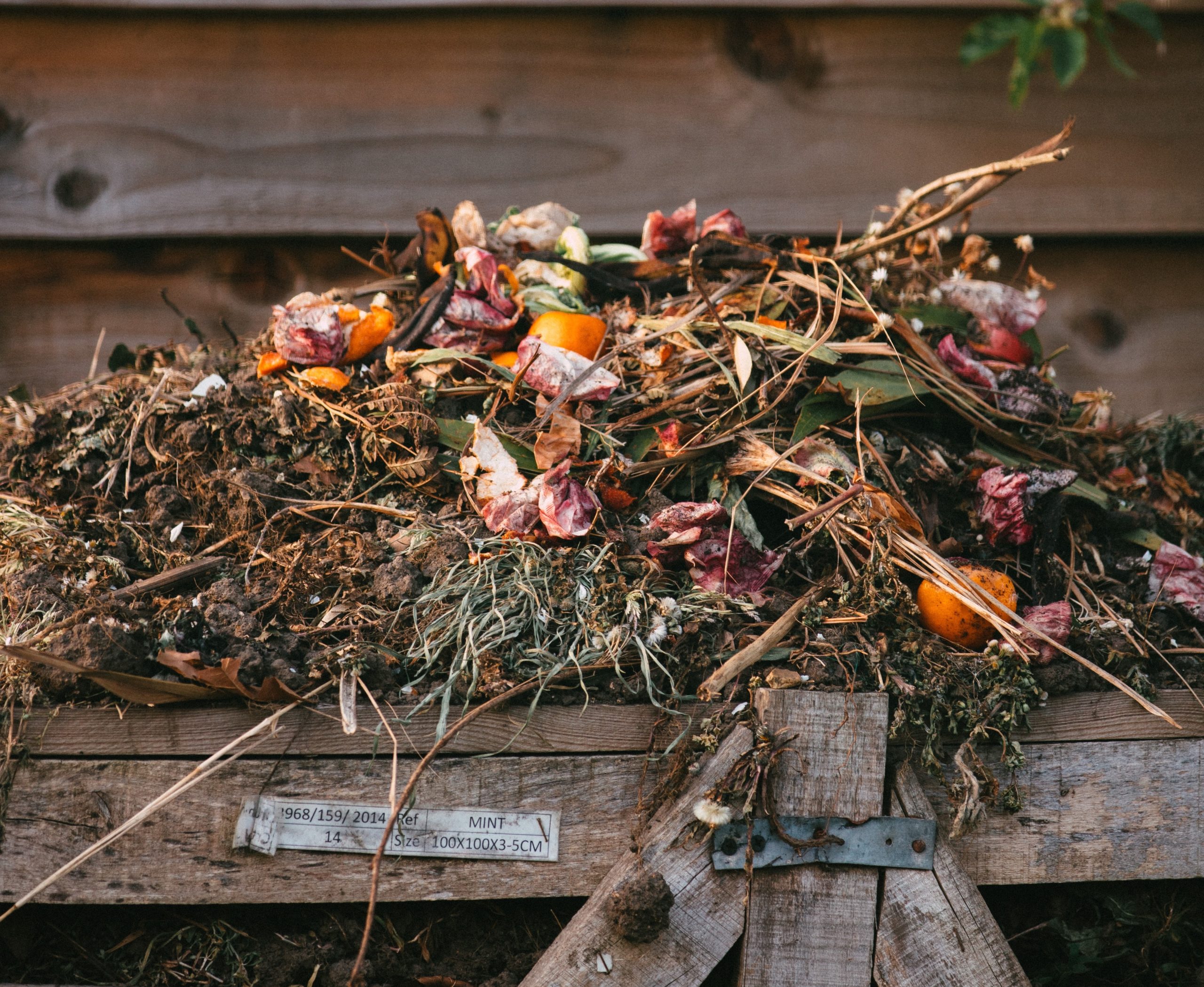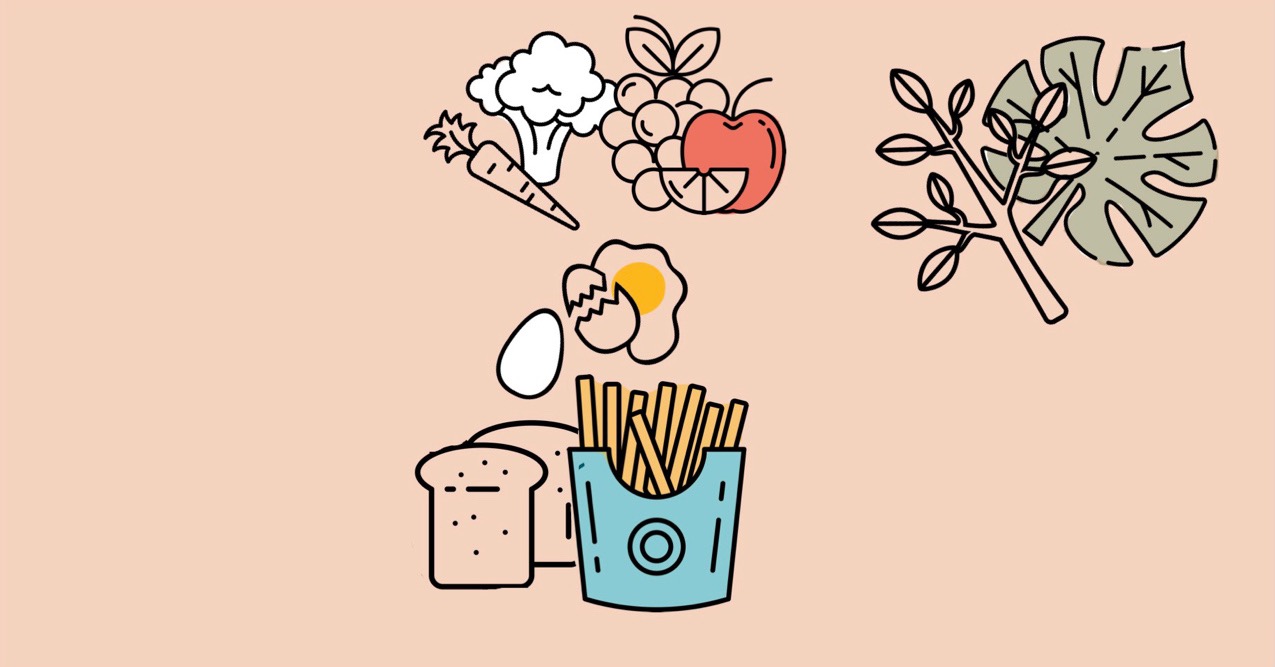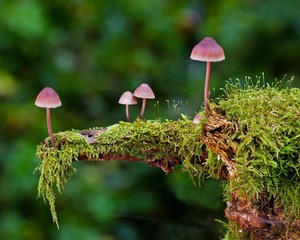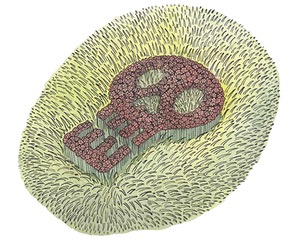
City Composting—One New Yorker’s Experience
By Véronique Firkusny
Sign up for our monthly newsletter!
For the first ten years of my life, we lived on a street in midtown Manhattan that was lined with restaurants. In those days we would walk to school in the morning, inevitably before the garbage collectors had come, and to this day I recall the nauseating and overwhelming smell emanating from the black garbage bags, piled in glistening, oozing heaps along the sidewalk. I would practice holding my breath, timing inhales for the occasional gaps. We moved in 1976 to a different part of the city with better airflow and a less dense distribution of dining establishments, the fresher air a welcome reprieve, but “garbage” back then was still one big bag of indiscriminate trash—no separation of paper or metal or plastic, let alone food waste. It wasn’t until 1986 that recycling bins first appeared in the compactor room of our building, and only in 1989 that recycling in New York City became mandatory. When my first child was born in 1990, I remember feeling heartened thinking that she would grow up in a world that was much more environmentally aware and responsible. Thirty-two years later, it is clear that much work remains to be done, but efforts are still underway, which leads us to composting!
It was through friends who lived in the country and had gardens, and in some cases chickens, that I first encountered composting. In addition to recycling, they were separating food scraps from the rest of their household waste. Between what went into the “chicken bowl” and what was set aside for the composting heap, the decrease in the amount of household trash put out for collection was dramatic. It was explained to me that composting—the word itself comes from the Latin verb compono meaning to collect together—is a process of gathering organic matter, namely matter derived from once living organisms, and allowing it to decompose over time with the end result being a substance called humus. Basically, it is as nature does, a simple way of giving food waste back to the earth as great soil. The composting process relies on microorganisms such as earthworms, fungi and other types of bacteria that help to speed up the process of decay during which food waste and plant residue are broken down into nutrients. We often use a composting bin in which food scraps and plant waste is collected, earthworms are introduced, and the heap is periodically turned over to make sure enough air gets in to allow the microbes to survive and thrive in their task.
The wonder of nature’s alchemy in transforming decaying matter into nutrient rich soil that can nourish plants and vegetables is in itself remarkable, but composting does so much more. It significantly reduces the amount of waste that is sent to landfills and converts it into an enormous resource.
According to the New York League of Conservation Voters (NYLCV), cited by Hunter College’s New York City Food Policy Center, “Food waste makes up roughly 18% of the waste stream in New York State, and roughly 20% of the city’s waste stream. Approximately 3.9 million tons of wasted New York food makes its way into landfills each year, where it decays and contributes massively to methane (a greenhouse gas even more harmful than carbon dioxide) production.”
Considering the high percentage of NYC residential trash that is food waste, and that the average household wastes 8.4 pounds of food each week, all of which produces enormous amounts of deadly methane when disposed of in standard trash, composting seems like a very obvious and necessary thing to do…. But can it work in a city?
What Composting Can Do
CUTS METHANE EMISSIONS
IMPROVES SOIL QUALITY
CONSERVES WATER
REDUCES CONSUMER FOOD WASTE
CUTS METHANE EMISSIONS
IMPROVES SOIL QUALITY
CONSERVES WATER
REDUCES CONSUMER FOOD WASTE

For more information, go to: https://www.epa.gov/lmop/basic-information-about-landfill-gas
One city friend pointed out that she was composting, keeping separated food scraps in her freezer, and dropping them off once a week at a composting station at a farmer’s market that operated on Saturdays near her home. The farmer’s market near us turned out also to have a composting drop off station. Time to begin! We started to separate food waste from the rest of our recycling and trash and bring it once a week to the Tucker Square Greenmarket composting station.
One day there were pamphlets on the table by the composting station with information on how to get your building to sign up for its own composting bins. NYC residents can sign up for Curbside Composting in one of three easy ways: 1- through their community board; 2 – individually via the NY Sanitation Department website; or, for apartment buildings with more than 10 units, through an authorized building representative. In the case of our building, I brought the pamphlet to our building Manager team who embraced the idea and jumped into action. The result was that in a short amount of time, two brown composting bins were delivered to our building and set up inside the back service entrance door, available to residents 24/7 and picked up as part of the sanitation department’s regular rounds. With over 600 apartment units, our building is practically the size of a village, so this felt like a substantial step in the right direction. During the peak of the Covid-19 pandemic in 2020, the curbside composting program in New York City was suspended, but on April 6, 2022, NYC Department of Sanitation announced that it was “Bringing Back ‘Green’ Programs!” The brown bins returned to our back door and composting resumed.
What Goes Into The Brown Bin

• Cooked, baked
and otherwise
prepared foods
• Cereal, flour,
grains, pasta,
and rice
• Spoiled and
expired food
• Eggs and
eggshells
• Dairy products
• Nuts, seeds,
pits, and shells
• Coffee grounds
and tea leaves
• Pet food
Compost
• Leaves and grass clippings
• Paper towels and napkins
• Paper plates and bags
• Paper coffee filters and tea bags
• Uncoated food service paper/packaging

• Cooked, baked
and otherwise
prepared foods
• Cereal, flour,
grains, pasta,
and rice
• Spoiled and
expired food
• Eggs and
eggshells
• Dairy products
• Nuts, seeds,
pits, and shells
• Coffee grounds
and tea leaves
• Pet food
Compost
• Leaves and grass clippings
• Paper towels and napkins
• Paper plates and bags
• Paper coffee filters and tea bags
• Uncoated food service paper/packaging
For more information, go to: https://www1.nyc.gov/assets/dsny/site/services/food-scraps-and-yard-waste-page/guidelines-tips.
I was curious to find out what other major U.S. cities offered residents access to some kind of a composting program. The environmental nonprofit GreenBlue offers a wonderful overview. There is still a long way to go in bringing more cities on board with composting, but the GreenBlue map illustrates that the process is off to a promising start. San Francisco has had a a highly successful mandatory composting and recycling program since 2000 and now the whole state of California is doing the same. Whether in rural environments or urban ones, it’s clear that the environmental impact of composting is significant. Yet a key element is educating the public. Even in our building, where the brown NYC Sanitation Department bins are highly visible and easily accessible, they are rarely full, and I find myself wondering how many residents use them.
It is important for people to realize that composting is not smelly or “dirty,” nor does it attract vermin or insects when scraps are kept in a tightly closed container or in the freezer. Countertop composting bins are easy to find, as are 100% compostable food scrap bags that are BPI certified and EPA approved. So much food is thrown out every day. We need to start thinking about food scraps in terms of how much potential value is being thrown out when they are simply tossed into the trash. By committing to composting our food and plant waste, each of us can reduce our carbon footprint and have a direct impact on the environmental direction in which our communities are going. Wherever you live, a good start is to look up your local sanitation department and see what services they offer – composting is easier than you think and if each one of us gets involved, the progress we are seeing in cities across the U.S.A. can accelerate exponentially. By reducing the waste sent to landfills, composting can make an enormous difference in combating climate change. It is a way for each of us to make a major contribution towards a greener future for our communities and beyond. If you haven’t already begun, please consider starting now.
Véronique Firkusny is a literary translator as well as a diction coach for singers and serves as the Executive Director of the Avery Fisher Artist Program. She is on WS/C’s Advisory Board.
References
https://nylcv.org/news/working-solve-new-yorks-food-waste-problem/
https://www.nycfoodpolicy.org/food-waste-food-by-the-numbers/#_ftn9
https://www1.nyc.gov/assets/dsny/site/resources/pressreleases/bringing-back-green-programs
Composting Resources for NYC residents:
https://dsny.force.com/curbsidecomposting/s/
https://greenblue.org/work/compostingaccess/
https://www1.nyc.gov/assets/dsny/site/services/food-scraps-and-yard-waste-page/guidelines-tips
General Composting Information:
GreenBlue https://greenblue.org/work/compostingaccess/
NRDC https://www.nrdc.org/stories/composting-101#benefits
EPA https://www.epa.gov/lmop/basic-information-about-landfill-gas
Quicksand
Carme

As Ireland transitions from the rich, smoky scent of peat-burning to a more sustainable future, its olfactory heritage is evolving. What will become the next iconic aromatic symbol of Ireland?
Click to watch the documentary trailer.






